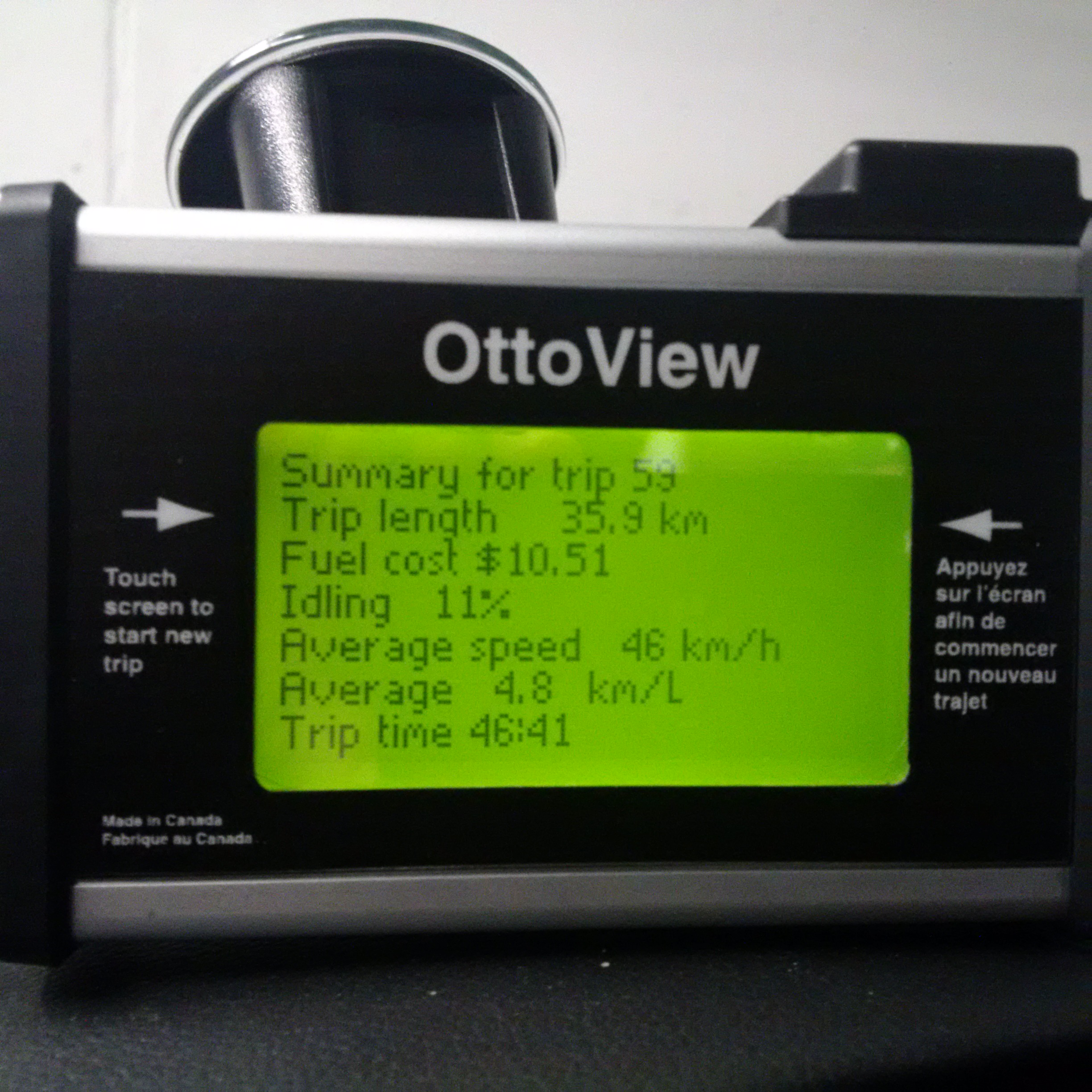
 Through a random selection process, I was recently invited by Transport Canada to participate in the Canadian Vehicle Use Study. The objective was to better understand how Canadians use their vehicles. This study uses a Canadian manufactured, autonomous logger (a sensor) that easily connects to your vehicle and collects data directly from the engine.
Through a random selection process, I was recently invited by Transport Canada to participate in the Canadian Vehicle Use Study. The objective was to better understand how Canadians use their vehicles. This study uses a Canadian manufactured, autonomous logger (a sensor) that easily connects to your vehicle and collects data directly from the engine.
During my three weeks of having the logger in use, each trip delivered data points that you would typically get from an onboard car computer. But I found that the logger also displayed time spent idling, my exact fuel usage and cost per trip.
On an individual level, I was intrigued with the cost per trip and often it felt I was driving my own personal taxi! Through the real-time capabilities of the logger, the overall experience gave me further pause to think about the environmental impact of my drive and how unproductive my time spent sitting in traffic truly is.

My logger in use during the Study. It cost $10.51 in fuel and nearly 47 minutes in time to drive 36 kms during rush hour.
It also reminded me how Canadians can benefit through Smart + Connected Cities enabled through the Internet of Everything (IoE).
How so? Recently we announced that the Internet of Everything’s Value at Stake – the total value of savings achieved plus new incomes generated – for Canada’s public sector is $92 billion dollars. Cisco Canada’s Mark Collins recently pointed out that the total value for public and private sector business in Canada is nearly twice as large as our federal budget.
The Internet of Everything presents an unprecedented opportunity for our public sector – literally by just taking advantage of what is already happening around us. The myriad of wearable technology announced at CES this year proved that more of the objects around us are being connected to the Internet. Why shouldn’t our public sector agencies leverage that connectivity to better protect citizens, plan for expenditures and decrease costs?
And that brings me back to the loggers. On a national level, the valuable data collected from these loggers assist federal ministries such as Transport, Environment and Natural Resources who see the bigger picture on traffic patterns, vehicle and fuel usage, and emissions. This information is critical in creating policies and services to improve our transportation infrastructure, increase road safety and to further protect our environment. These types of studies are becoming increasingly important in supporting the transition to intelligent transportation systems.
Now imagine if that data was available in real-time from all vehicles, traffic lights and sensors on the road. A city planner could know which roads and bridges required maintenance before an accident. Traffic lights would change with traffic patterns, resulting in shorter commutes for drivers. And seasonal maintenance crews could be deployed to the precise areas they are needed, based on sensor data. All this and more is possible in the Internet of Everything.
The Canadian Vehicle Use study is the first of its kind globally, and is gaining well-deserved international attention. It’s a great illustration of IoE working in the Canadian public sector to create future value through the intelligent connection between people, process, data and things.